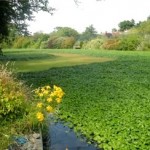
Arlington, VA – On July 15, The Nature Conservancy shared key actions that can begin to restore the Gulf’s health and productivity, which directly impacts the lives and livelihoods of 24 million Americans from Florida to Texas, who rely on a healthy and vibrant Gulf of Mexico.
“The future of the Gulf of Mexico is at stake,” said Brian McPeek, Chief Conservation Strategy Officer and North American Regional Managing Director for The Nature Conservancy. “The Gulf tragedy has made it painfully clear just how closely linked healthy and vibrant human communities are to a healthy and resilient environment.”
The Conservancy’s “Gulf 20/20” report highlights the fact that because of decades of degradation in the Gulf, merely cleaning up the spill will not be enough to save the Gulf and all the benefits – food, habitat, livelihoods, recreation, shelter – it provides. The report goes on to outline key actions that can begin to reverse the long years of damage and restore the natural infrastructure – the bays and estuaries, the rivers, forests and reefs – that is the foundation of all life in the Gulf.
“Over the last 100 years, human activities have impacted the health and resilience of the Gulf,” said Dr. Robert Twilley, Professor of Oceanography & Coastal Sciences at Louisiana State University. “These impacts to the Gulf include reduced water quality such as expanded dead zones, declining fisheries, disappearing wetlands and dying reefs.”
“These habitat changes threaten the capacity of this region to sustain the bountiful wildlife and fisheries that has historically been of tremendous recreational value; in addition to reducing risks to storm surge. And the historical loss of key Gulf coastal landscapes along shorelines, beaches and bays amplify the impact of the Deepwater Horizon oil gusher to an already fragile coastal region.”
The report also emphasizes that it will be important to expand and accelerate conservation and restoration work on areas that have so far been spared from the oil. Once the full impact of the spill is realized in other areas of the Gulf, restoration planning and activities will need to include those places as well. Bays and estuaries with clean water, healthy oyster reefs and seagrass beds will be important lifelines for other parts of the Gulf as it struggles to heal itself from the oil.
The following action can be taken right now:
- Beginning, expanding and accelerating restoration in key bays, estuaries and rivers considered critical to the Gulf’s survival. Restoring estuaries helps to replenish damaged fisheries, putting fishermen back to work. Investments in a fraction of these “no regrets” places can serve as model demonstration sites to restore reefs, rebuild marshes and protect communities from storms and sea-level rise.
- Ensuring any future oil and gas development is carried out in a safe and sustainable manner and comprehensive regional marine plans integrate and coordinate other marine uses, including conservation of important marine habitat.
- Investing in science and research to inform decision-making and restoration plans. The full impact of a spill of this magnitude on the Gulf’s ecosystems will not be known for some time. Scientific study will be essential to guide where and how to focus conservation and restoration action to deliver maximum benefits to the communities and wildlife that depend on it.
- Establishing a coalition that works together to seek a sustainable future for the Gulf, a coalition where governments, non-governmental organizations, communities, corporations, industries like oil and gas, fisheries, agriculture and tourism, and many others who value and rely on the Gulf can come together around a truly comprehensive plan to re-imagine, revitalize and restore it.
To read or download the full report, visit www.nature.org/gulfofmexico.

The Nature Conservancy
The Nature Conservancy is a leading conservation organization working around the world to protect ecologically important lands and waters for nature and people. To date, the Conservancy and its more than one million members have been responsible for the protection of more than 18 million acres in the United States and have helped preserve more than 117 million acres in Latin America, the Caribbean, Asia and the Pacific. Visit The Nature Conservancy on the web at www.nature.org.
Source: The Nature Conservancy Press Release dated July 15, 2010.













